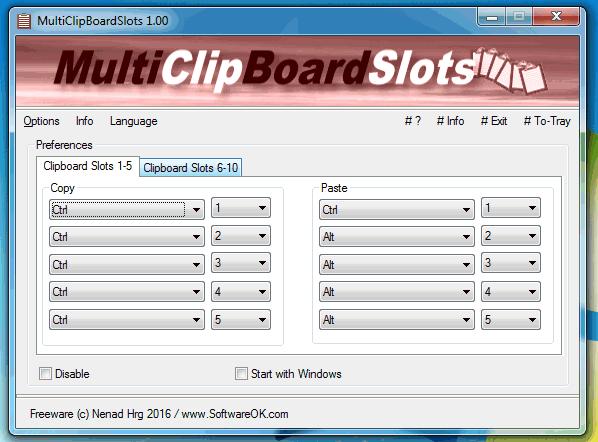

The 2nd copy command (Ctrl + 1) sends the content that it copied to Windows' clipboard. Restore the Clipboard is disabled, and we use Ctrl + C for saving the first line, and then use Ctrl + 1 for the other. This sentence is copied to MultiClipboardSlots. This line is copied to the Windows Clipboard. The "Restore the clipboard" option in the menu is quite important. Don't like that? Click on the Options menu in the top left corner and disable "Play Copy Sound" and "Play Paste Sound". You'll hear a sound play when you copy something to the clipboard or paste an item. NEW: Toolbar: Added the sub option 'Count the filesize of hard links once only (slower)' at the button 'Start'NEW: Toolbar: Added the sub option 'Show percent bar in front of folder names' at the button 'Start'NEW: Options: Now you can specify the date/time format used to render the timestamp of filesFIX: Various optimizations and new enhancements have been introduced in various sections of GetFoldersize.Try it out. NEW: Toolbar: Added the sub option 'Count the filesize of hard links once only (slower)' at the button 'Start'NEW: Toolbar: Added the sub option 'Show percent bar in front of folder names' at the button 'Start'NEW: Options: Now you can specify the date/time format used to render the timestamp of filesFIX: Various optimizations and new enhancements have been introduced in various sections of GetFoldersize. GetFolderSize scans an entire drive and displays the exact size for each folder and subfolder in that drive.

The app is also embedded with Windows Explorer, which means you can access it from any folder's context menu. The list generated by GetFolderSize can be saved to TXT or CSV, and also printed. The analysis can take a while, especially if you're working with large folders. If you click on any of these folders, the contents will be displayed on the right pane. GetFolderSize will scan the selected drive and then display a list with all the folders and their correspondent size.


 0 kommentar(er)
0 kommentar(er)
